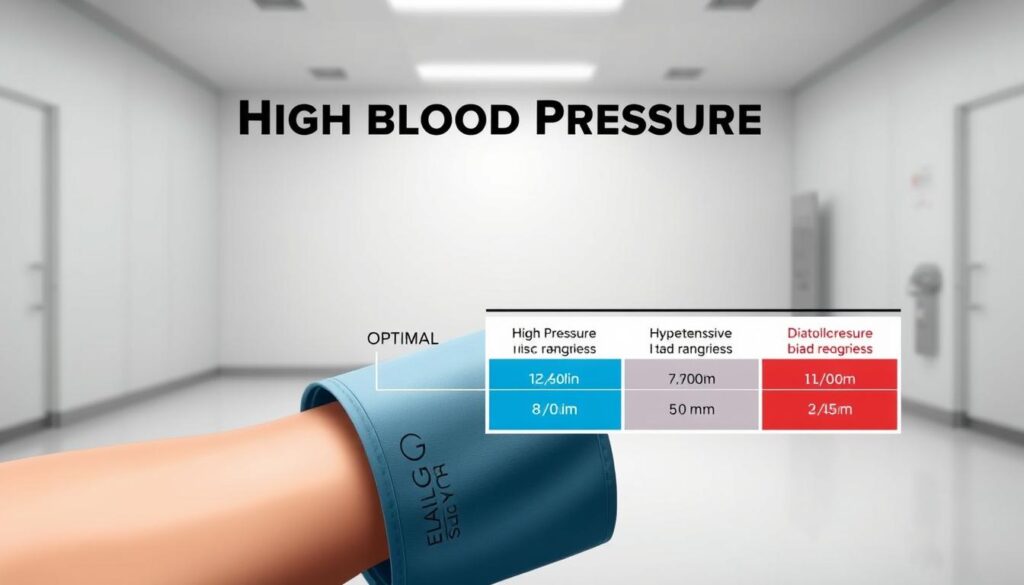Nearly 1 in 2 adults in the United States has hypertension, a condition that significantly increases the risk of heart disease and stroke. Managing high blood pressure is crucial for maintaining overall health.
Fortunately, there are several natural methods that can help reduce blood pressure without relying on medication. These include dietary changes, lifestyle modifications, and home remedies that are easy to incorporate into daily life.
By adopting these natural approaches, individuals can not only manage their blood pressure but also improve their overall well-being. This article will explore some effective ways to lower high blood pressure naturally.
Key Takeaways
- Understanding the risks associated with high blood pressure.
- Dietary changes that can help reduce blood pressure.
- Lifestyle modifications for managing hypertension.
- Effective home remedies for lowering blood pressure.
- The importance of regular monitoring and check-ups.
Understanding High Blood Pressure and Its Risks
Managing high blood pressure requires a comprehensive understanding of what hypertension is and its associated risks. Hypertension, or high blood pressure, is a medical condition where the force of blood against the artery walls is consistently too high.
What is Hypertension and Normal Blood Pressure Ranges
Normal blood pressure is typically defined as being below 120/80 mmHg. Hypertension is diagnosed when blood pressure readings are consistently at or above 130/80 mmHg. Understanding these ranges is crucial for identifying and managing hypertension.

Health Complications of Untreated High Blood Pressure
Untreated hypertension can lead to serious health complications, including heart disease, stroke, kidney disease, and vision loss. The risk of these complications can be significantly reduced through lifestyle changes and, if necessary, medication.
| Complication | Description |
|---|---|
| Heart Disease | Increased risk of heart failure and coronary artery disease. |
| Stroke | High blood pressure can cause blood vessels in the brain to burst. |
| Kidney Disease | Hypertension can damage kidney blood vessels, reducing their function. |
When to Seek Medical Help
If you’re experiencing symptoms like severe headache, dizziness, or chest pain, seek medical help immediately. Regular check-ups are also crucial for early detection and management of hypertension.
By understanding hypertension and its risks, individuals can take proactive steps towards managing their blood pressure through lifestyle changes for lower blood pressure and, if necessary, medical treatment.
Dietary Changes That Lower Blood Pressure
Eating the right foods can help manage hypertension and lower blood pressure without relying on medication. A well-balanced diet is crucial in maintaining overall cardiovascular health.
The DASH Diet Approach
The DASH (Dietary Approaches to Stop Hypertension) diet is specifically designed to help lower blood pressure. It focuses on consuming fruits, vegetables, whole grains, and lean proteins. The DASH diet has been shown to reduce systolic blood pressure by up to 6 mmHg, making it an effective dietary approach for managing hypertension.
Reducing Sodium Intake
High sodium intake is a significant contributor to high blood pressure. Reducing sodium consumption can help lower blood pressure. The American Heart Association recommends consuming no more than 2,300 milligrams of sodium per day, with an ideal limit of 1,500 milligrams for most adults.
Potassium, Magnesium, and Calcium-Rich Foods
Consuming foods rich in potassium, magnesium, and calcium can help counteract the effects of sodium and lower blood pressure. Examples include bananas, leafy greens, nuts, and dairy products. These nutrients play a crucial role in maintaining healthy blood vessel function and overall cardiovascular health.
Foods to Avoid with Hypertension
Certain foods can exacerbate high blood pressure and should be avoided or consumed in moderation. These include processed meats, foods high in added sugars, and those containing saturated and trans fats. Limiting these foods can help in managing hypertension and reducing the risk of related health complications.
By incorporating these dietary changes, individuals can take a proactive approach to lowering their blood pressure naturally. Making informed food choices is a crucial step in maintaining overall health and well-being.
How to Lower Blood Pressure Naturally at Home Through Exercise
Engaging in physical activity is one of the most effective ways to reduce high blood pressure without relying on medication. Regular exercise not only helps in lowering blood pressure but also improves overall cardiovascular health.
Cardiovascular Exercises for Hypertension
Cardiovascular exercises, such as brisk walking, cycling, and swimming, are highly recommended for individuals with hypertension. These activities help strengthen the heart and improve blood flow, contributing to lower blood pressure readings. Aim for at least 30 minutes of moderate-intensity exercise most days of the week.
Strength Training Benefits
Strength training is another effective way to manage hypertension. By building muscle mass, individuals can improve their overall metabolism and enhance cardiovascular health. It’s recommended to incorporate strength training exercises at least two times a week.
Creating a Sustainable Exercise Routine
To make exercise a habit, it’s crucial to create a routine that is enjoyable and sustainable. This can involve finding an exercise buddy, tracking progress, and varying the types of exercises to avoid boredom.
Exercise Precautions for People with High Blood Pressure
While exercise is beneficial, individuals with high blood pressure should take certain precautions. It’s advisable to consult with a healthcare provider before starting a new exercise regimen, especially if there are underlying health conditions.
Weight Management Strategies
Weight management plays a vital role in controlling hypertension and improving overall health. Maintaining a healthy weight reduces the strain on the heart, lowering blood pressure and minimizing the risk of associated health complications.
The Connection Between Weight and Blood Pressure
There is a direct correlation between body weight and blood pressure. As body weight increases, so does blood pressure, due to the increased strain on the heart and blood vessels. Losing weight can significantly help in reducing blood pressure levels.
Setting Realistic Weight Loss Goals
Setting achievable weight loss goals is crucial. Aim to lose 1-2 pounds per week for a sustainable weight loss. This can be achieved through a combination of dietary changes and regular physical activity.
Healthy Eating Patterns for Weight Control
Adopting a balanced diet rich in fruits, vegetables, whole grains, and lean proteins can help control weight. Portion control and mindful eating
Stress Reduction Techniques
Stress reduction is a vital component of any plan to lower high blood pressure naturally. Chronic stress can have a significant impact on blood pressure, making it essential to adopt effective stress management strategies.
Meditation and Mindfulness Practices
Meditation and mindfulness have been shown to help reduce stress and lower blood pressure. Regular practice can lead to a decrease in systolic and diastolic blood pressure, contributing to overall cardiovascular health. Incorporating mindfulness into daily activities can also enhance the benefits of meditation.
Deep Breathing Exercises
Deep breathing exercises are another effective way to manage stress. By focusing on slow, deliberate breaths, individuals can calm the mind and body, reducing the strain on the heart. This technique can be practiced anywhere, making it a convenient tool for stress management.
Yoga and Tai Chi for Blood Pressure Management
Yoga and tai chi combine physical movement with deep breathing and meditation techniques, offering a holistic approach to stress reduction. These practices have been found to not only reduce stress but also improve overall physical and mental well-being, contributing to lower blood pressure.
Managing Stress in Daily Life
Managing stress in daily life involves a combination of identifying stressors, adopting stress reduction techniques, and making lifestyle changes. By incorporating practices like meditation, deep breathing, yoga, or tai chi into daily routines, individuals can better manage stress and contribute to lowering their blood pressure naturally.
By adopting these stress reduction techniques, individuals can take a proactive approach to managing their blood pressure and improving their overall health.
Lifestyle Modifications for Better Blood Pressure
Making lifestyle modifications is crucial for managing high blood pressure effectively. By incorporating a few simple changes into daily routines, individuals can significantly improve their blood pressure management.
Limiting Alcohol Consumption
Excessive alcohol consumption can lead to increased blood pressure. Limiting alcohol intake to moderate levels (up to one drink per day for women and up to two drinks per day for men) can help mitigate this risk. Reducing alcohol consumption can be achieved by setting drink limits, choosing lower-alcohol beverages, and avoiding binge drinking.
Quitting Smoking
Smoking is a significant risk factor for cardiovascular diseases, including high blood pressure. Quitting smoking can greatly reduce this risk and improve overall cardiovascular health. Various resources, such as nicotine replacement therapy and counseling, are available to help individuals quit smoking.
Improving Sleep Quality
Poor sleep quality can negatively impact blood pressure. Improving sleep hygiene by maintaining a consistent sleep schedule, creating a relaxing bedtime routine, and avoiding caffeine before bedtime can enhance sleep quality.
Reducing Caffeine Intake
High caffeine intake can cause temporary increases in blood pressure. While moderate caffeine consumption is generally safe for most adults, sensitive individuals may need to limit their intake further. Being mindful of caffeine sources, including coffee, tea, and certain medications, can help manage blood pressure.
By implementing these lifestyle modifications, individuals can take significant steps toward managing their blood pressure naturally. A balanced approach that includes dietary changes, regular exercise, and stress management can lead to overall better health.
Home Monitoring and Tracking Progress
Home monitoring allows individuals to take an active role in controlling their blood pressure. By regularly tracking their blood pressure, individuals can identify patterns and changes, enabling them to make informed decisions about their health.
Choosing the Right Blood Pressure Monitor
Selecting an appropriate blood pressure monitor is crucial for accurate readings. Digital monitors are user-friendly and provide quick results. When choosing a monitor, consider factors such as cuff size and ease of use. It’s also beneficial to look for monitors that have been validated for accuracy by reputable organizations.
How to Measure Blood Pressure Correctly
To ensure accurate blood pressure readings, follow these steps:
- Sit comfortably with your back supported.
- Place your arm on a flat surface at heart level.
- Avoid caffeine and smoking before measurement.
- Relax for a few minutes before taking a reading.
Keeping a Blood Pressure Journal
Maintaining a blood pressure journal helps track readings over time, providing insights into how different factors affect your blood pressure. Record the date, time, and reading, as well as any notes about your activity or stress levels.
| Date | Time | Blood Pressure Reading | Notes |
|---|---|---|---|
| 2023-03-01 | 08:00 | 120/80 | Low stress, morning reading |
| 2023-03-01 | 18:00 | 125/85 | After exercise |
Understanding Blood Pressure Readings
Blood pressure readings are given as two numbers: systolic pressure (the top number) and diastolic pressure (the bottom number). Understanding these readings is crucial for managing hypertension. A reading of 120/80 mmHg is considered normal, while higher readings indicate potential issues.
By effectively monitoring and tracking blood pressure at home, individuals can better manage their hypertension and work towards lowering blood pressure without medication.
Conclusion: Creating Your Blood Pressure Management Plan
By incorporating the lifestyle changes discussed in this article, individuals can effectively lower their blood pressure naturally at home. A well-rounded approach includes dietary modifications, regular exercise, stress reduction techniques, and other lifestyle adjustments.
To create a personalized blood pressure management plan, start by assessing your current habits and identifying areas for improvement. Consider consulting with a healthcare professional to determine the best course of action for your specific needs.
Implementing lifestyle changes for lower blood pressure can have a significant impact on overall health. By making informed choices and staying committed to your plan, you can achieve better blood pressure control and reduce the risk of related health complications.
By taking a proactive approach to managing blood pressure, individuals can improve their overall well-being and enhance their quality of life. Effective blood pressure management involves ongoing monitoring and adjustments to your lifestyle plan as needed.
